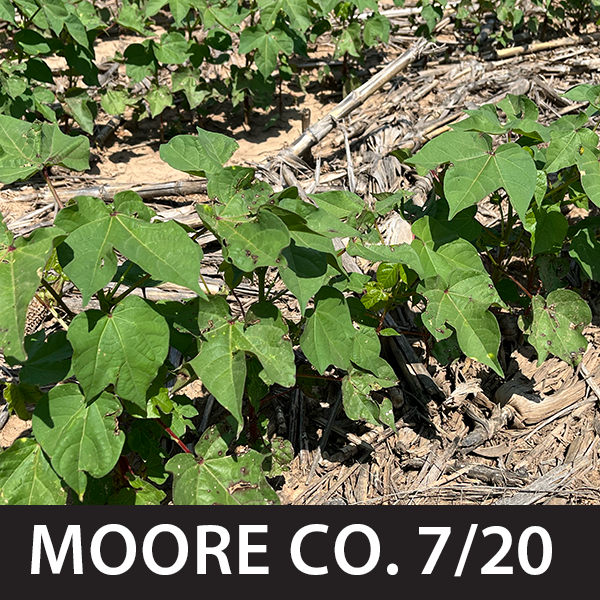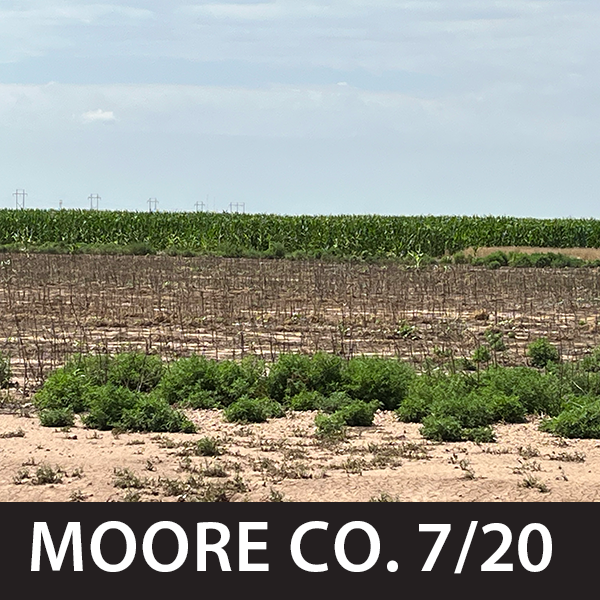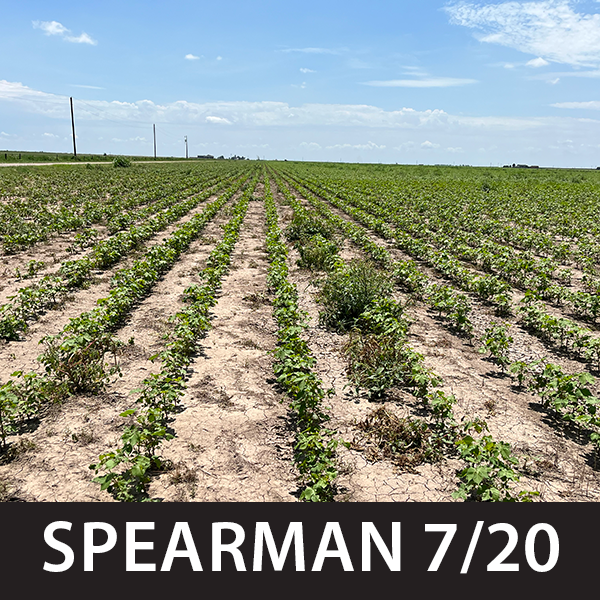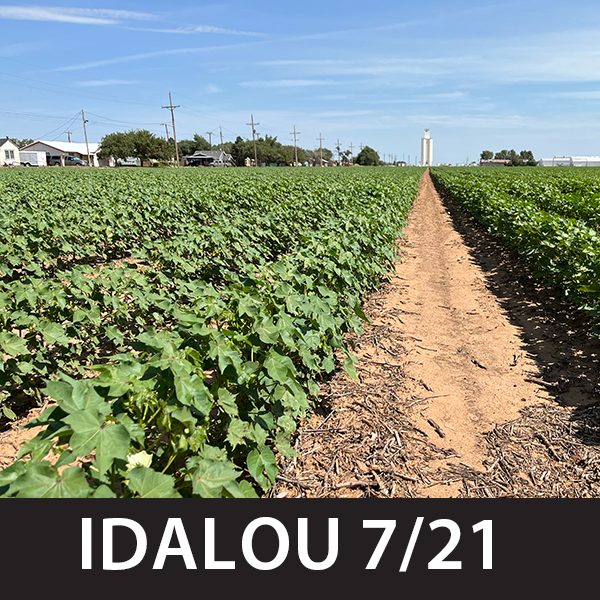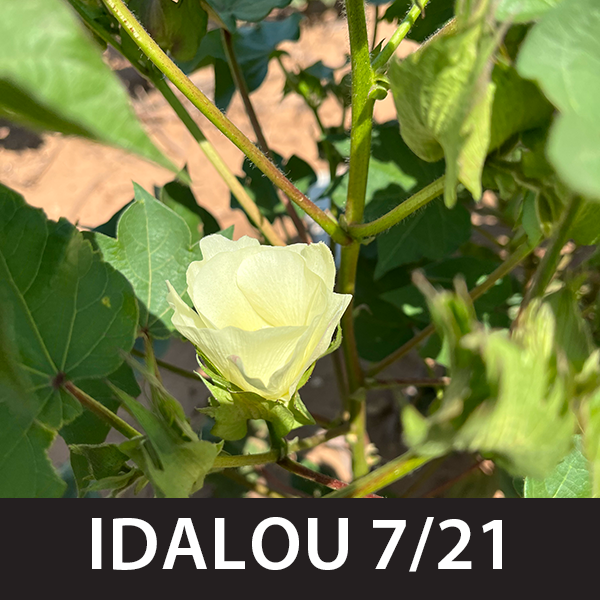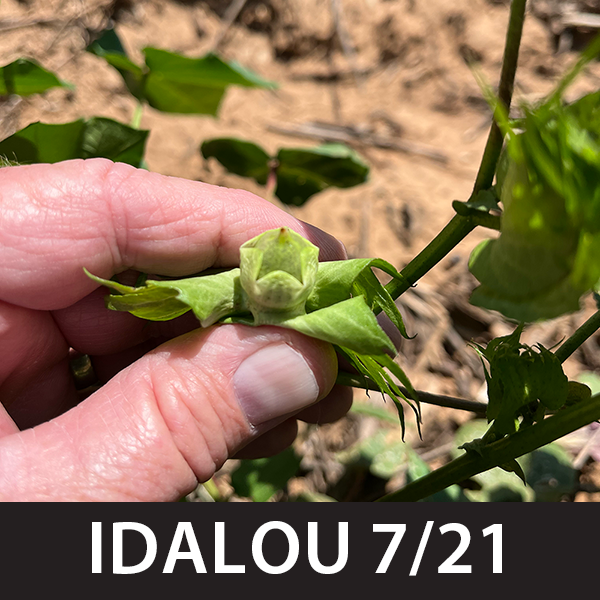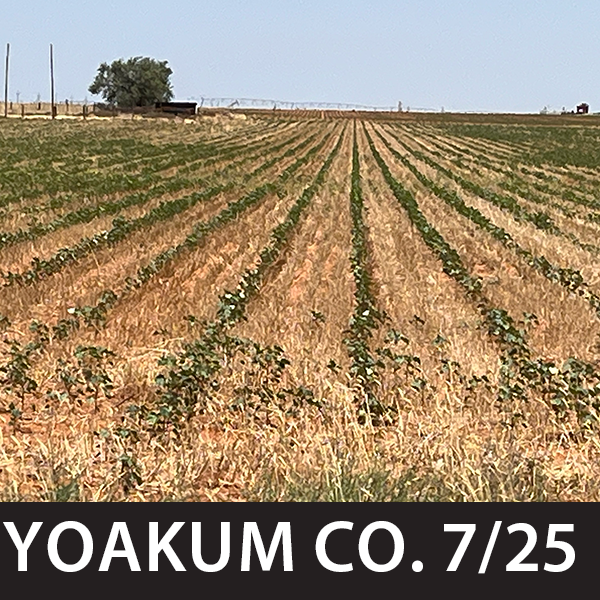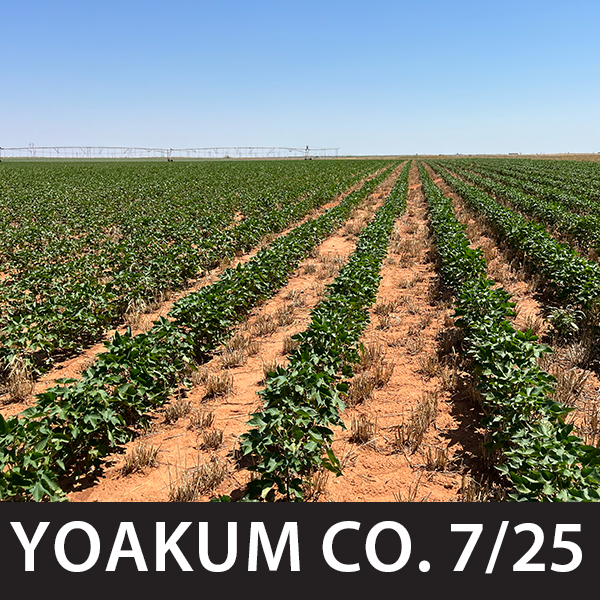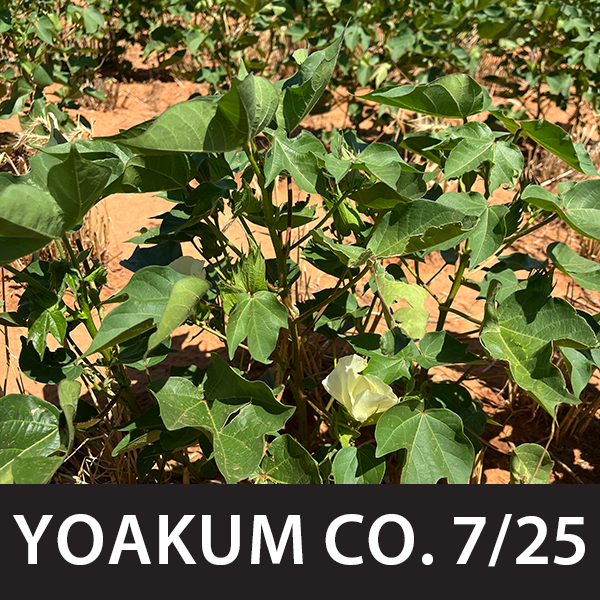Welcome to the July 28, 2023 issue of Cotton News, a service provided by Plains Cotton Growers Inc. for the cotton industry in the Texas High Plains and beyond.

Cotton field in Idalou, Texas. Photo taken July 21, 2023.
The Only Certainty This Crop Year
From plowed up cotton fields to neighboring crops that look like ‘the Garden of Eden,” the only certainty regarding this year’s crop is that there is none.
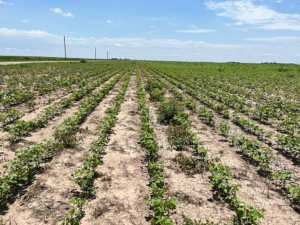
Cotton field in Spearman, Texas. Photo taken on July 20, 2023.
“As you travel through PCG counties, you can find pretty much whatever you want to find,” added Plains Cotton Growers Director of Field Services Mark Brown. “We’re still not sure what’s going to happen this crop year.”
The latest World Agricultural Supply and Demand Estimates report, released by the U.S. Department of Agriculture on July 12, has some people scratching their heads given the conditions seen in PCG’s region.
While the July report did reduce planted acreage nationwide from 11.26 million planted acres to 11.09 million estimated planted acres, Darren Newton, cotton trader for Viterra, believes this to be too high.
“Personally, I think our planted acres have been ill defined up to this point, so the August Farm Service Agency certified acreage report is going to be important this year,” Newton said. “However, the National Agricultural Statistics Service won’t use that data until the September crop production report and that should give us a clearer picture and more accurate projection.”
The High Plains is not the only region facing uncertainty, which could affect projections further into the season.
“Last week I was out in Arizona and I have never seen as much cotton blooming out the top there at this time of the year before,” said BASF Western Region Agronomic Manager Kenny Melton.
Goanna Ag Vice President of Commercial Research and Development Paxton Peyton added that areas near Altus, Oklahoma, are really dry and just don’t have enough water to finish their crop out.
As has been said time and again, conditions across the High Plains are a mixed bag — some counties are faring better than others.
Panhandle
If there is any remaining cotton in the northern Panhandle, it’s behind and weather beaten. The picture on the right of the field in Spearman was the only cotton Brown has seen of late when traveling in that area.
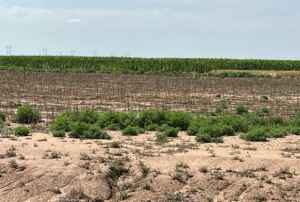
Cotton field north of Dumas, Texas. Photo taken on July 20, 2023.
Floyd, Hale and Swisher Counties
Floyd County may be considered one of the bright spots of the High Plains. “It seems a little better there,” Melton said. “Some of the irrigated cotton there was planted late, but most is progressing well and looks good.”
Blayne Reed, Texas A&M AgriLife Extension Agent-IPM for Hale and Swisher Counties said Hale County is down in terms of potential production, but Swisher is ‘not down as much.’
“We’ve got some good looking cotton in Swisher,” he added.
Howard, Martin and Midland Counties
While some areas in the High Plains received rainfall in July, Howard, Martin and Midland Counties did not. “It’s really unfortunate because they actually had a crop up and things were looking pretty good there,” Brown said. “But they didn’t receive any moisture this month.”
As to how this crop year will work out, only time will tell.
Don’t Delay Fertilizer Applications
In his newsletter this week, Kerry Siders, Texas A&M AgriLife Extension Agent-IPM for Cochran, Hockley and Lamb Counties, emphasized the importance of fertilizer applications by the end of July.
According to Siders, two things happen with late fertilizer applications on cotton. First, cotton maturity can be delayed. Second, aphids love this late excessive nitrogen.
“Producers should be vigilant in scouting fields for pests as many of them are applying fertilizer right now,” Siders said. “I occasionally see a cotton aphid, but beneficial insects and spider numbers are very good.”
The Roller Coaster Ride of a Speculative Market
Wednesday, July 26th saw an uptick in the market price, the highest since March at 88 cents. However, the export report released the following day by the U.S. Department of Agriculture Foreign Agriculture Service showed a net negative in sales. With more cancellations than purchases, it looks like we took one step forward Wednesday then two steps backward Thursday.
Darren Newton, cotton trader for Viterra, said this is how a speculative market behaves and even when the price begins to run up, it’s going to be hard to maintain without demand.
“I’ve said it over and over again, but better demand needs to show up to build confidence in seeing higher prices” he added. “Supply helps but demand has to be there.”
Newton emphasized the need to stay on top of the market as a producer. As was the case this week, you may only have one day to make a decision with how volatile the market has been.

